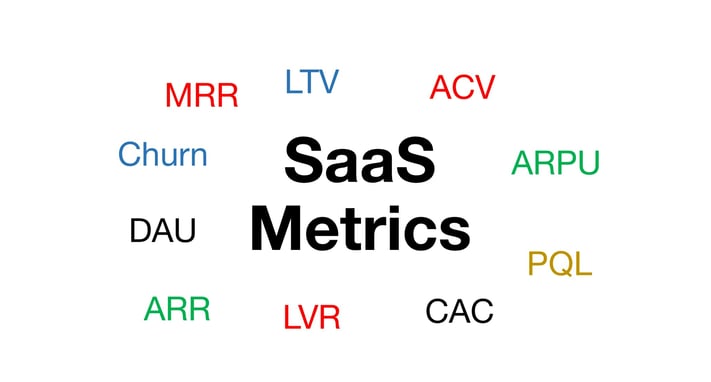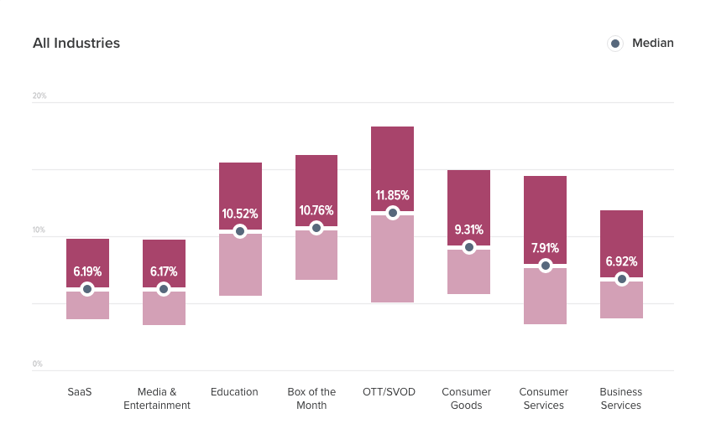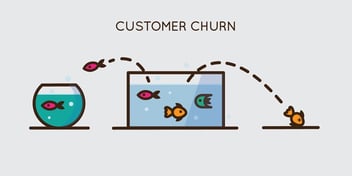What is churn? How do I calculate it? Why is it important? All your churn rate questions answered. In one place.

Within the SaaS Industry, a huge effort is made on acquiring customers so it makes sense to ensure they stay around as long as possible, which will help make your company stable, stronger and more profitable.
What is Churn Rate?
Quite simply, churn rate is the number of customers and/or subscribers who decided to leave your service or company in a given time period. These are customers of yours who have 'churned'. They aren’t coming back. Churn rate is the numerical value attributed to your ability to retain customers.
How to calculate Churn Rate?
If you have 100 customers at the start of a month and 92 customers at the end of the month then your churn rate would look like this:
Calculation: (Starting Customer Number - Ending Customer Number) /Starting Customer Number = Monthly Customer Churn Rate
(100-92) ÷ 100 = 8 ÷ 100 = 0.08
Which to you, your old maths teacher, is a Monthly Customer Churn Rate of 8%.
There are much more increasingly complex ways in which you can understand what your actual churn rate is, and most of them take varying considerations of segmentation and timeframes into account.
For instance, the ProfitWell blog lists no less than 43 variables, incorporating a wide variety of leading SaaS companies’ analytics.
Why is Churn Rate important?
Churn rate is the essential metric for measuring the success/performance of a Software company. It is why you end the year with a much different-looking customer list than the one you started with in January. It also explains why your sales team is performing in record numbers, but your net revenue isn’t increasing.
How to lower/reduce your customer Churn Rate
In short, there are two ways to do lower your customer Churn Rate. It involves understanding what is good about your product as well as understanding what is not so good. Combining these two aspects will form the basis of your ‘retention strategy.’
There are lots of different ways to achieve the holy grail of 0% churn and there isn’t enough space here to list them all. Some of the main ways to lower your churn include:
- Keeping in touch with a customer after the sale has been made
- Making good on your sales promises
- Extending great customer experience
- Ensuring your company blog continues to be hooked and baited with valuable content and offers
- Offering loyalty benefits
- Segmenting your customers for better service
- Doing research on your competitors
- Reacting accordingly
- Listening to your customers.
For more ways to reduce customer churn, take a look at this Churn article.
How to achieve negative Churn?
Not quite the same as lowering your churn rate, because achieving negative churn has more to do with your business model. David Skok manages to answer this question. To paraphrase his answer; achieving negative churn requires at least three things:
- An expanding revenue model - As usage of your service grows, so does the price. The longer a customer stays, the more they are likely to be paying.
- Take advantage of the up-sell - Spend time and effort to funnel your customers towards a better-featured version of your product.
- Cross-selling - Develop complementary products and cross-sell them to your existing customers.
What is an acceptable Churn Rate?
Churn-rate figures vary considerably from one industry to the next. Lets take a look at some statistics to give you a taste of what to expect:
- Apps: Across all industries within the App space, according to Localytics, 80% of all app users churn within 90 days. Granted, this will include a large proportion of 'consumer' industry applications (where a small minority spend the most money) but its still a huge number and the 'native app' industry relies heavily on new customer acquisition.
- SAAS: Looking more towards B2B Software, you will see stats like 5-10% churn rate thrown around. 5% sounds pretty good doesn't it? Well it might be a good benchmark to work towards - BUT ONLY if you are consistently adding new customers. Sixteen Ventures comment - "Having 5% monthly churn means if you started January with 100 customers you’d have 54 customers left at the end of December"
To finish up this post, here are some averages by industry (data sourced from Recurly)

If you are keen to find out ways to improve your customer acquisition and improve your retention rates, take a look at our eBook - Inbound Marketing for Technology Companies.





